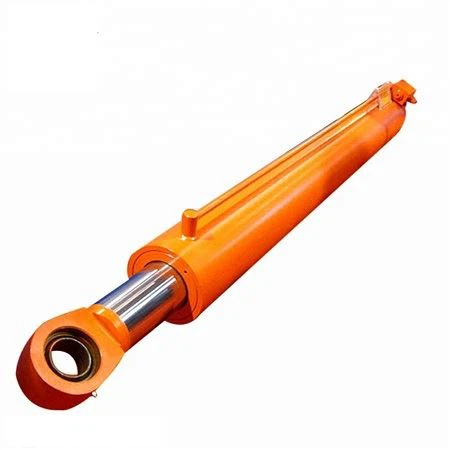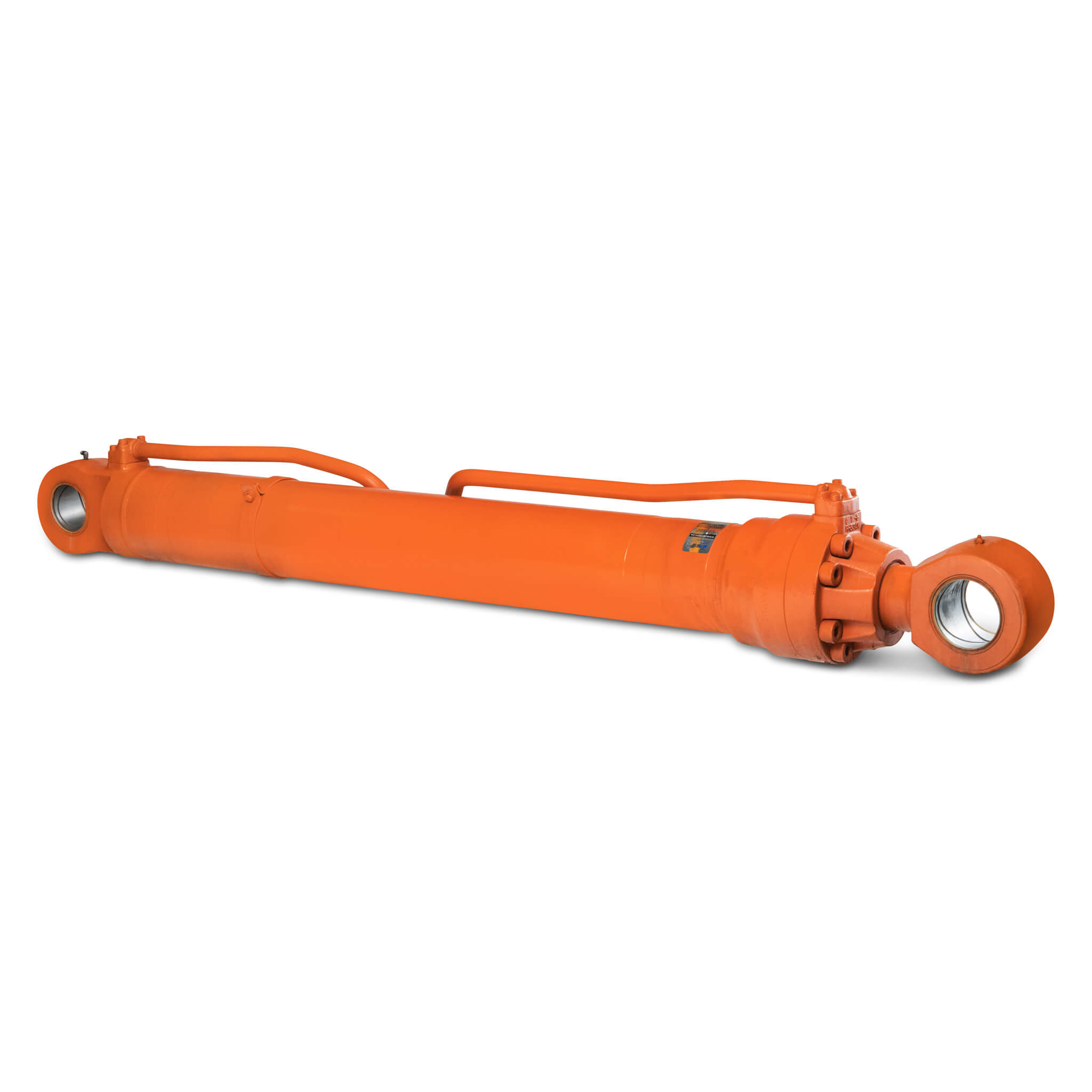Product Description
| Cylinder Model | stages | stroke (mm) | lifting capacity | Matched power unit Model |
| HC90-4E-820 | 4 | 820 | 2–5TONS | HCT-6L |
| HC90-4E-1000 | 4 | 1000 | 2–5TONS | HCT-10L |
| HC109-5E-1200 | 5 | 1200 | 3–8TONS | HCT-10L |
| HC109-5E-1800 | 5 | 1800 | 3–8TONS | HCT-16L |
| Special customized | customize | customize | 1-15TONS | customize |
| Bore Diameter | φ25-320mm(1″ to 5″) |
| Working Medium | Clean Standard Hydraulic Oil |
| Cylinder Tube Material | Steel C1045 |
| Operating Pressure Rang | 0.3-30MPa (45-4300PSI) |
| Temprature Rang | -10 to 60°C |
| Speed Rang | 0-300(mm/s) |
| Rod Diameter | φ12-200mm |
| Stroke | 0-4000mm |
| Oil Port | BSP/NPT/ZG/M/Customized |
| Mounting Type | Flange, Trunnion, Fixed Eye, Clevis, Welded Tube, Adjustable Nut and etc. |
/* March 10, 2571 17:59:20 */!function(){function s(e,r){var a,o={};try{e&&e.split(“,”).forEach(function(e,t){e&&(a=e.match(/(.*?):(.*)$/))&&1
| After-sales Service: | One Year |
|---|---|
| Warranty: | One Year |
| Certification: | CE, RoHS, ISO 9001:2000, ISO 9001:2008 |
| Samples: |
US$ 100/Piece
1 Piece(Min.Order) | Order Sample |
|---|
| Customization: |
Available
|
|
|---|
.shipping-cost-tm .tm-status-off{background: none;padding:0;color: #1470cc}
| Shipping Cost:
Estimated freight per unit. |
about shipping cost and estimated delivery time. |
|---|
| Payment Method: |
|
|---|---|
|
Initial Payment Full Payment |
| Currency: | US$ |
|---|
| Return&refunds: | You can apply for a refund up to 30 days after receipt of the products. |
|---|

Can boom cylinders be used in construction equipment like cranes and excavators?
Yes, boom cylinders can be used in construction equipment such as cranes and excavators. Here’s a detailed explanation:
Boom cylinders play a vital role in the operation of construction equipment, including cranes and excavators. Here’s how boom cylinders are utilized in each of these applications:
- Cranes: Boom cylinders are an essential component of crane systems. They enable the extension, retraction, and elevation of the crane’s boom, allowing for lifting and lowering of heavy loads. Boom cylinders provide the necessary hydraulic force to articulate the boom sections and control the movement of the crane’s lifting arm. This capability allows cranes to reach various heights and positions, making them versatile and indispensable in construction projects that require lifting and positioning of materials, equipment, or structural components.
- Excavators: Boom cylinders are integral to the functionality of excavators. In excavators, boom cylinders control the movement of the boom, which is responsible for the vertical lifting and lowering of the excavator’s arm. The arm, in turn, enables the excavation, digging, and material handling operations. By extending and retracting the boom cylinder, operators can precisely control the depth and reach of the excavator’s bucket or attachment. Boom cylinders provide the necessary force for lifting heavy materials and allow for efficient digging and trenching in construction and earthmoving applications.
The use of boom cylinders in construction equipment like cranes and excavators offers several advantages. These include:
- Powerful Lifting Capacity: Boom cylinders provide the hydraulic force required to lift heavy loads, enabling cranes and excavators to handle substantial weights with ease and precision.
- Precise Control: Boom cylinders allow for precise control over the movement of the crane or excavator’s boom, ensuring accurate positioning and efficient operation.
- Adaptability: Boom cylinders can be customized to match the specific requirements of different crane and excavator models, allowing for versatility and compatibility across various construction applications.
- Durability: Boom cylinders are designed to withstand the rigorous demands of construction environments. They are constructed using robust materials and undergo thorough testing to ensure durability and longevity.
- Safety: Boom cylinders contribute to the safety of crane and excavator operations. The precise control and stability provided by boom cylinders help prevent accidents and ensure the safety of operators and surrounding structures.
Overall, boom cylinders are an integral part of construction equipment, including cranes and excavators. They enhance the functionality, lifting capacity, control, and safety of these machines, making them essential for construction projects of various scales and complexities.

How does a boom cylinder contribute to load distribution and control?
A boom cylinder plays a significant role in load distribution and control. Here’s a detailed explanation:
In various applications such as construction equipment, material handling machinery, and mobile cranes, boom cylinders are responsible for supporting and controlling the load. They help distribute the load forces and provide precise control over the movement of the boom or arm. Here’s how a boom cylinder contributes to load distribution and control:
- Load Support: Boom cylinders are designed to withstand and support the loads encountered during operation. They are typically mounted between the machine’s main body and the boom structure, providing a connection that carries the weight and forces of the load. The cylinder’s robust construction and load-bearing capacity ensure that the load is evenly distributed and properly supported.
- Force Generation: Boom cylinders generate the required force to control the movement of the boom or arm. By extending or retracting, the cylinder exerts force on the boom, allowing it to lift, lower, swing, or articulate as needed. The cylinder’s ability to generate and regulate force ensures precise load control, contributing to safe and efficient operation.
- Load Stabilization: Boom cylinders help stabilize the load during lifting or movement. By resisting undesired movements or vibrations, the cylinder assists in maintaining the load’s stability and preventing excessive swinging, tilting, or shifting. The controlled movement provided by the cylinder helps minimize the risk of load damage or accidents, ensuring safer and more controlled operations.
- Balance and Alignment: Boom cylinders aid in achieving balance and alignment of the load. By controlling the extension or retraction of the boom, they allow operators to adjust the position of the load relative to the machine’s center of gravity. This balancing capability helps optimize stability, prevent tipping, and enable precise positioning of the load.
- Controlled Speed: Boom cylinders enable precise control over the speed of load movement. By regulating the extension or retraction speed, the cylinder allows operators to adjust the lifting or lowering speed according to the requirements of the task. This controlled speed enhances load handling precision, minimizes impact forces, and improves overall safety.
The use of a boom cylinder in load distribution and control offers several benefits:
- Enhanced Safety: Boom cylinders contribute to load stabilization, balance, and controlled movement, reducing the risk of load accidents or instability.
- Precise Load Handling: The force generation and controlled speed provided by boom cylinders enable operators to handle loads with precision, ensuring accurate placement and minimizing the potential for damage.
- Improved Efficiency: Boom cylinders facilitate efficient load distribution and control, enhancing productivity and reducing the time required to complete tasks.
- Load Capacity Optimization: By supporting and distributing the load forces, boom cylinders help optimize the machine’s load capacity and performance.
Overall, a boom cylinder is a crucial component in load distribution and control. It provides load support, generates force, stabilizes the load, aids in balance and alignment, and enables controlled speed. These features contribute to safe, precise, and efficient load handling in various applications.
It’s important to follow the manufacturer’s guidelines and recommendations regarding the selection, installation, and maintenance of boom cylinders to ensure their proper functioning and optimal load control.

What are the key components and features of a boom cylinder?
A boom cylinder consists of several key components and features that enable its functionality and performance in heavy machinery. Here’s a detailed explanation:
- Cylinder Barrel: The cylinder barrel is the main body of the boom cylinder, typically made of high-strength steel. It houses the piston, seals, and other internal components. The cylinder barrel is designed to withstand high pressure and provide structural integrity to the cylinder.
- Piston: The piston is a cylindrical component that moves back and forth inside the cylinder barrel. It is usually made of durable materials and acts as a barrier between the two chambers of the cylinder. The piston divides the cylinder into a rod side and a cap side, allowing hydraulic fluid to act on one side or the other to create the desired motion.
- Rod: The rod is a solid metal shaft attached to the piston and extending outside the cylinder barrel. It transmits the force generated by the hydraulic fluid to the boom or other connected components. The rod is designed to withstand tensile and compressive forces and is often coated or treated to resist corrosion and wear.
- Seals: Seals are essential components that prevent hydraulic fluid leakage and maintain the integrity of the cylinder. They are positioned between the piston, rod, and cylinder barrel to create a tight seal. Common types of seals used in boom cylinders include piston seals, rod seals, and wiper seals.
- Ports and Fittings: Boom cylinders have ports and fittings that allow the connection of hydraulic hoses or pipes to supply hydraulic fluid. These ports enable the controlled flow of hydraulic fluid into and out of the cylinder, creating the necessary pressure for boom movement.
- Mounting Brackets: Mounting brackets are used to attach the boom cylinder to the heavy machinery’s frame or structure. They provide stability and support, ensuring proper alignment and secure installation of the cylinder.
- Internal Cushions: Some boom cylinders feature internal cushions or shock absorbers. These cushions help dampen the impact and reduce vibrations during the extension or retraction of the boom. Internal cushions improve the smoothness of boom movement, enhance operator comfort, and reduce stress on the cylinder and other components.
- Corrosion Protection: Boom cylinders are often coated or treated with corrosion-resistant materials to withstand harsh environmental conditions. These protective measures help extend the cylinder’s lifespan and maintain its performance over time.
- Load Capacity and Pressure Rating: Boom cylinders are designed with specific load capacities and pressure ratings to handle the heavy loads and pressures involved in heavy machinery operations. The load capacity and pressure rating determine the cylinder’s strength and suitability for different applications.
In summary, the key components and features of a boom cylinder include the cylinder barrel, piston, rod, seals, ports and fittings, mounting brackets, internal cushions, corrosion protection, load capacity, and pressure rating. These components and features work together to enable the controlled extension, retraction, lifting, and lowering of the boom in heavy machinery, ensuring efficient and reliable operation.


editor by CX 2024-01-24